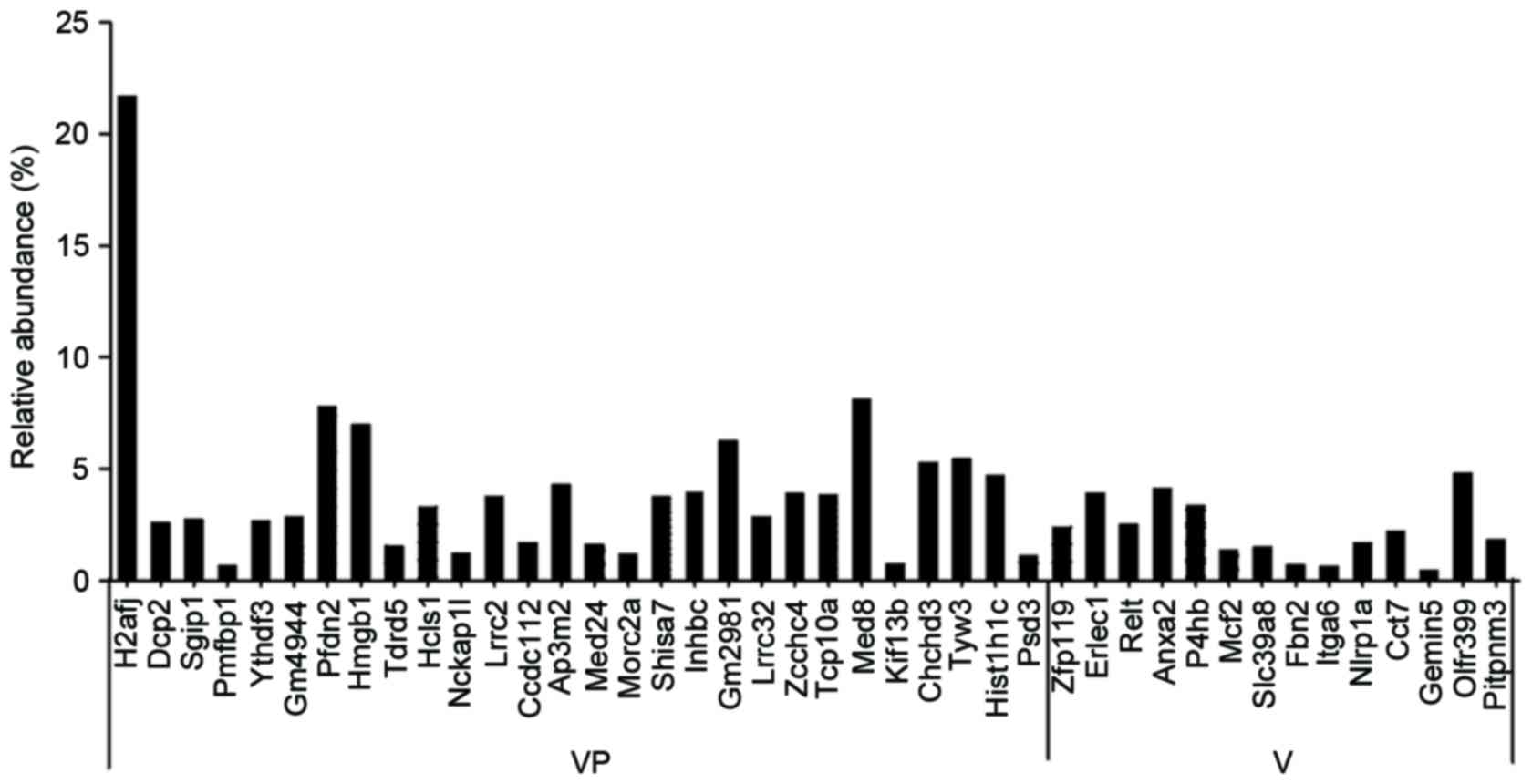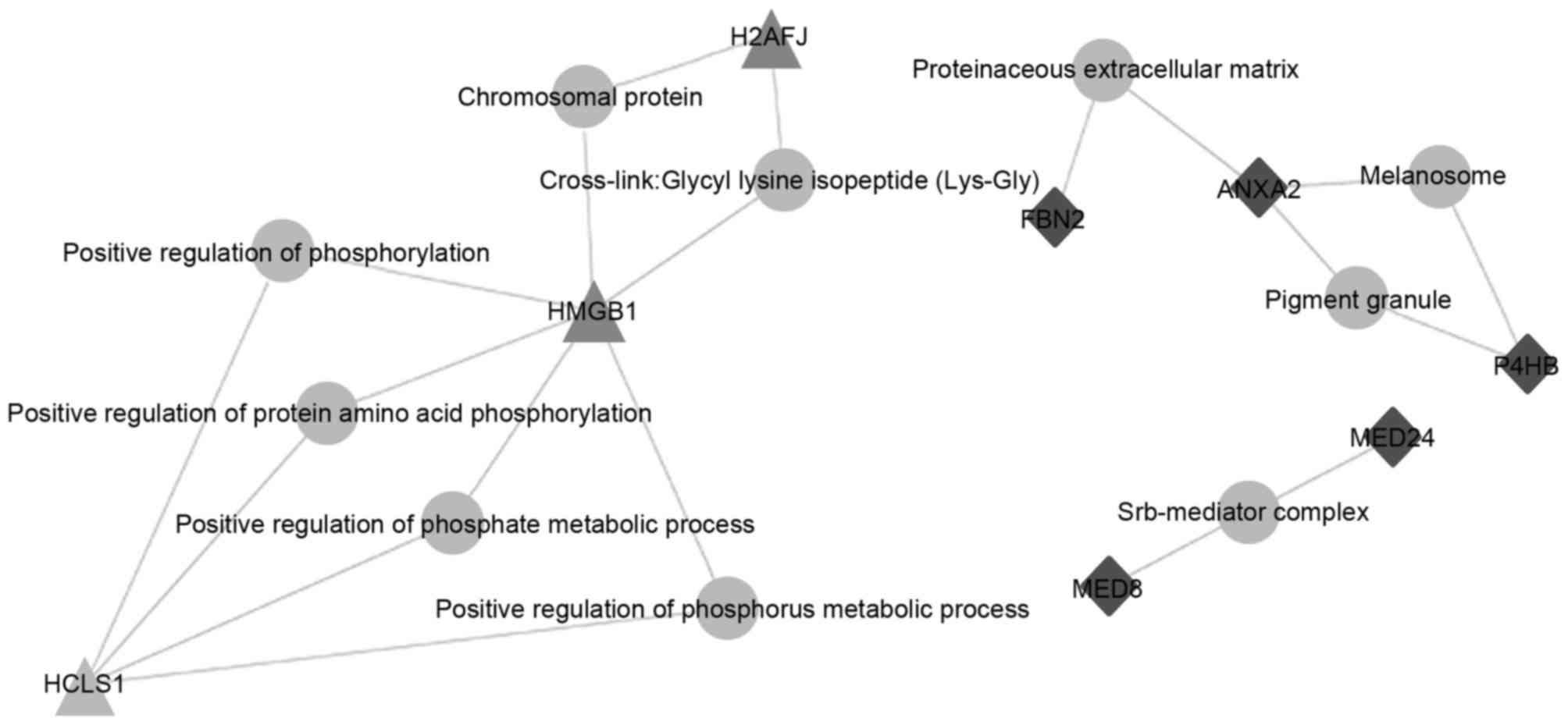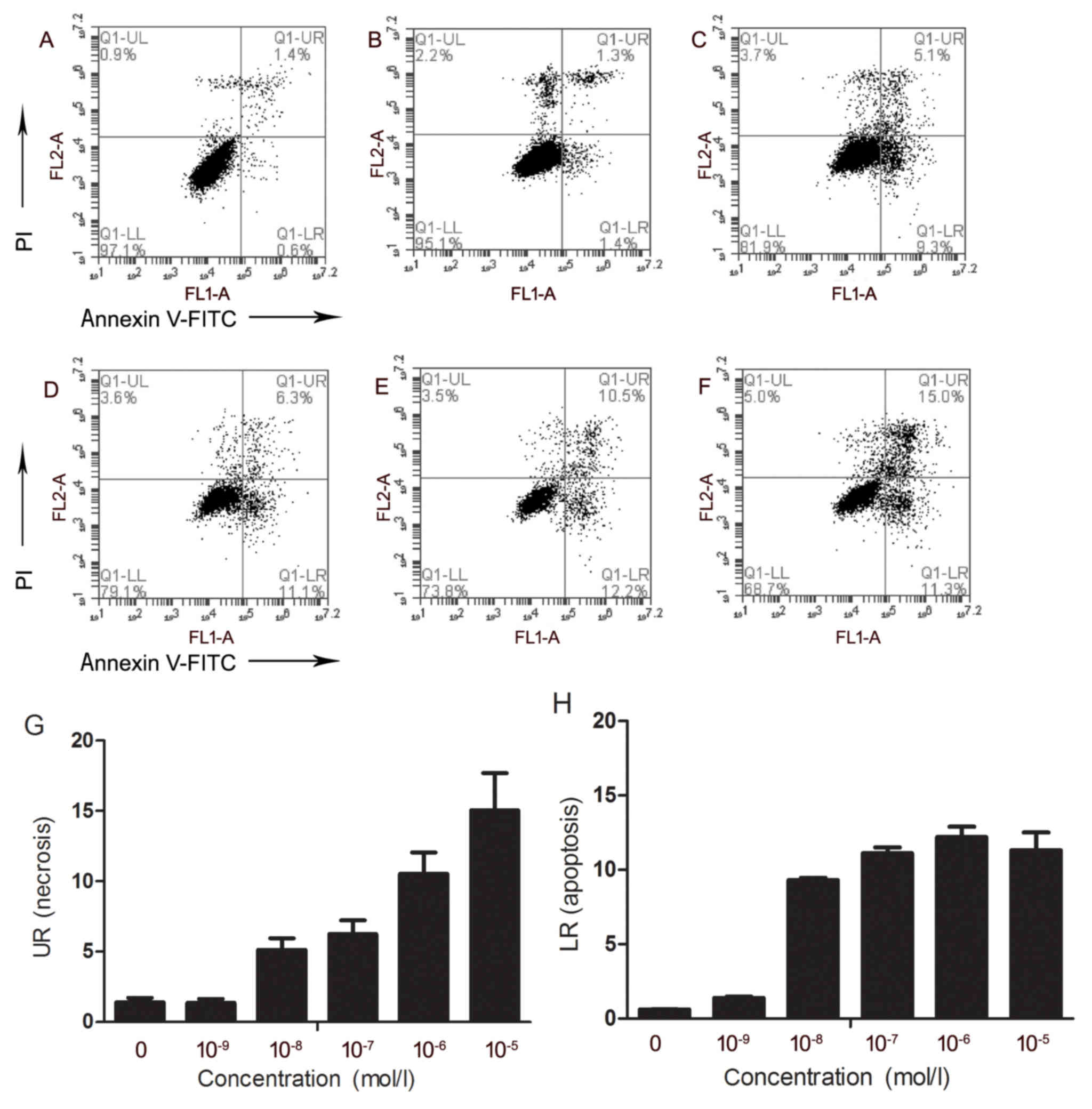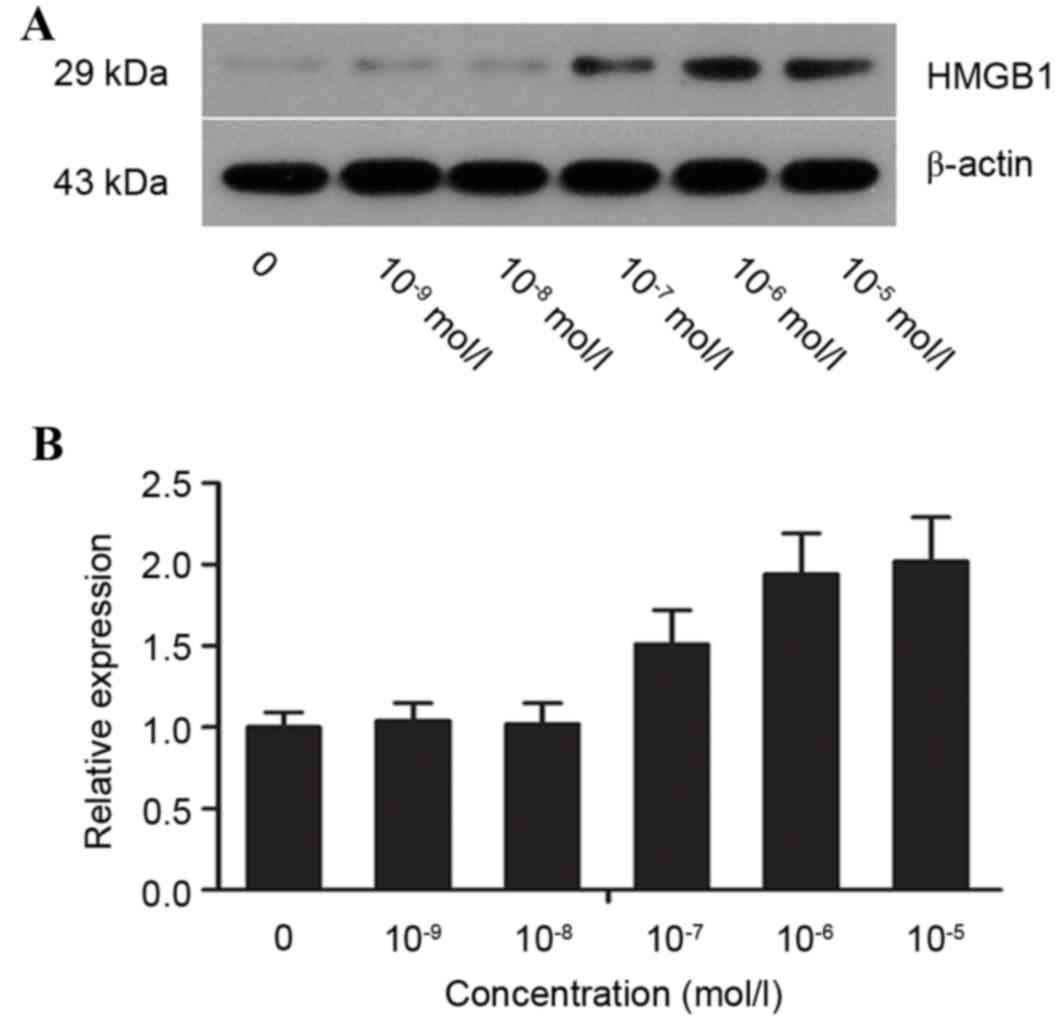|
1
|
Petersen OH, Tepikin AV, Gerasimenko JV,
Gerasimenko OV, Sutton R and Criddle DN: Fatty acids, alcohol and
fatty acid ethylesters: Toxic Ca2+ signal generation and
pancreatitis. Cell Calcium. 45:634–642. 2009. View Article : Google Scholar
|
|
2
|
Keck T, Friebe V, Warshaw AL, Antoniu BA,
Waneck G, Benz S, Hopt UT and Fernández-del-Castillo C: Pancreatic
proteases in serum Leukocyte-endothelial adhesion and pancreatic
microcirculatory failure. Pancreatology. 5:241–250. 2005.
View Article : Google Scholar
|
|
3
|
Leung PS and Chan YC: Role of oxidative
stress in pancreatic inflammation. Antioxid Redox Signal.
11:135–165. 2009. View Article : Google Scholar
|
|
4
|
Golstein P and Kroemer G: Cell death by
necrosis: Towards a molecular definition. Trends Biochem Sci.
32:37–43. 2007. View Article : Google Scholar
|
|
5
|
Rinderknecht H: Fatal pancreatitis, a
consequence of excessive leukocyte stimulation? Int J Pancreatol.
3:105–112. 1988.
|
|
6
|
Ziangirova GG and Antonova OV: The causes
of necrobiosis and apoptosis of corneal epithelial cells during
primary acquired keratoconus. Izv Akad Nauk Ser Biol. 5:517–521.
2002.(In Russian).
|
|
7
|
Andersson R and Wang XD: Patterns of
pancreatic cell death: Apoptosis versus oncosis. Pancreas.
17:281–288. 1998. View Article : Google Scholar
|
|
8
|
Chu J, Ji H, Lu M, Li Z, Qiao X, Sun B,
Zhang W and Xue D: Proteomic analysis of apoptotic and oncotic
pancreatic acinar AR42J cells treated with caerulein. Mol Cell
Biochem. 382:1–17. 2013. View Article : Google Scholar
|
|
9
|
Bhatia M: Apoptosis versus necrosis in
acute pancreatitis. Am J Physiol Gastrointest Liver Physiol.
286:G189–G196. 2004. View Article : Google Scholar
|
|
10
|
Hori O, Brett J, Slattery T, Cao R, Zhang
J, Chen JX, Nagashima M, Lundh ER, Vijay S, Nitecki D, et al: The
receptor for advanced glycation end products (RAGE) is a cellular
binding site for amphoterin. Mediation of neurite outgrowth and
co-expression of rage and amphoterin in the developing nervous
system. J Biol Chem. 270:25752–25761. 1995. View Article : Google Scholar
|
|
11
|
Park JS, Svetkauskaite D, He Q, Kim JY,
Strassheim D, Ishizaka A and Abraham E: Involvement of toll-like
receptors 2 and 4 in cellular activation by high mobility group box
1 protein. J Biol Chem. 279:7370–7307. 2004. View Article : Google Scholar
|
|
12
|
Urbonaviciute V, Fürnrohr BG, Meister S,
Munoz L, Heyder P, De Marchis F, Bianchi ME, Kirschning C, Wagner
H, Manfredi AA, et al: Induction of inflammatory and immune
responses by HMGB1-nucleosome complexes: Implications for the
pathogenesis of SLE. J Exp Med. 205:3007–3018. 2008. View Article : Google Scholar :
|
|
13
|
Park JS, Gamboni-Robertson F, He Q,
Svetkauskaite D, Kim JY, Strassheim D, Sohn JW, Yamada S, Maruyama
I, Banerjee A, et al: High mobility group box 1 protein interacts
with multiple Toll-like receptors. Am J Physiol Cell Physiol.
290:C917–C924. 2006. View Article : Google Scholar
|
|
14
|
Goodwin GH, Sanders C and Johns EW: A new
group of chromatinassociated proteins with a high content of acidic
and basic amino acids. Eur J Biochem. 38:14–19. 1973. View Article : Google Scholar
|
|
15
|
Wang H, Bloom O, Zhang M, Vishnubhakat JM,
Ombrellino M, Che J, Frazier A, Yang H, Ivanova S, Borovikova L, et
al: HMG-1 as a late mediator of endotoxin lethality in mice.
Science. 285:248–251. 1999. View Article : Google Scholar
|
|
16
|
Wang H, Yang H, Czura CJ, Sama AE and
Tracey KJ: HMGB1 as a late mediator of lethal systemic
inflammation. Am J Respir Crit Care Med. 164:1768–1773. 2001.
View Article : Google Scholar
|
|
17
|
Magna M and Pisetsky DS: The role of HMGB1
in the pathogenesis of inflammatory and autoimmune diseases. Mol
Med. 20:138–146. 2014. View Article : Google Scholar :
|
|
18
|
Singh A, Feng Y, Mahato N, Li J, Wu C and
Gong J: Role of high-mobility group box 1 in patients with acute
obstructive suppurative cholangitis-induced sepsis. J Inflamm Res.
8:71–77. 2015. View Article : Google Scholar :
|
|
19
|
Yasuda T, Ueda T, Takeyama Y, Shinzeki M,
Sawa H, Nakajima T, Ajiki T, Fujino Y, Suzuki Y and Kuroda Y:
Significant increase of serum high-mobility group box chromosomal
protein 1 levels in patients with severe acute pancreatitis.
Pancreas. 33:359–363. 2006. View Article : Google Scholar
|
|
20
|
Sawa H, Ueda T, Takeyama Y, Yasuda T,
Shinzeki M, Nakajima T and Kuroda Y: Blockade of high mobility
group box-1 protein attenuates experimental severe acute
pancreatitis. World J Gastroenterol. 12:7666–7670. 2006. View Article : Google Scholar :
|
|
21
|
Scaffidi P, Misteli T and Bianchi ME:
Release of chromatin protein HMGB1 by necrotic cells triggers
inflammation. Nature. 418:191–195. 2002. View Article : Google Scholar
|
|
22
|
Yu C, Huang L, Li X, Zhu H, Li Z and Yu X:
Spatial and temporal differences of HMGB1 expression in the
pancreas of rats with acute pancreatitis. Int J Clin Exp Pathol.
8:6928–6935. 2015.
|
|
23
|
Biscetti F, Ghirlanda G and Flex A:
Therapeutic potential of high mobility group box-1 in ischemic
injury and tissue regeneration. Curr Vasc Pharmacol. 9:677–681.
2011. View Article : Google Scholar
|
|
24
|
Yasuda T, Ueda T, Shinzeki M, Sawa H,
Nakajima T, Takeyama Y and Kuroda Y: Increase of high-mobility
group box chromosomal protein 1 in blood and injured organs in
experimental severe acute pancreatitis. Pancreas. 34:487–488. 2007.
View Article : Google Scholar
|
|
25
|
Sah RP and Saluja A: Molecular mechanisms
of pancreatic injury. Curr Opin Gastroenterol. 27:444–451. 2011.
View Article : Google Scholar :
|
|
26
|
Bünger R, Mallet RT and Hartman DA:
Pyruvate-enhanced phosphorylation potential and inotropism in
normoxic and postischemic isolated working heart. Near-complete
prevention of reperfusion contractile failure. Eur J Biochem.
180:221–233. 1989. View Article : Google Scholar
|
|
27
|
Cicalese L, Lee K, Schraut W, Watkins S,
Borle A and Stanko R: Pyruvate prevents ischemia-reperfusion
mucosal injury of rat small intestine. Am J Surg. 171:97–101. 1996.
View Article : Google Scholar
|
|
28
|
Sileri P, Schena S, Morini S, Rastellini
C, Pham S, Benedetti E and Cicalese L: Pyruvate inhibits hepatic
ischemia-reperfusion injury in rats. Transplantation. 72:27–30.
2001. View Article : Google Scholar
|
|
29
|
Miyaji T, Hu X, Yuen PS, Muramatsu Y, Iyer
S, Hewitt SM and Star RA: Ethyl pyruvate decreases sepsis-induced
acute renal failure and multiple organ damage in aged mice. Kidney
Int. 64:1620–1631. 2003. View Article : Google Scholar
|
|
30
|
Satoh A, Shimosegawa T, Fujita M, Kimura
K, Masamune A, Koizumi M and Toyota T: Inhibition of nuclear
factor-kappaB activation improves the survival of rats with
taurocholate pancreatitis. Gut. 44:253–258. 1999. View Article : Google Scholar :
|













